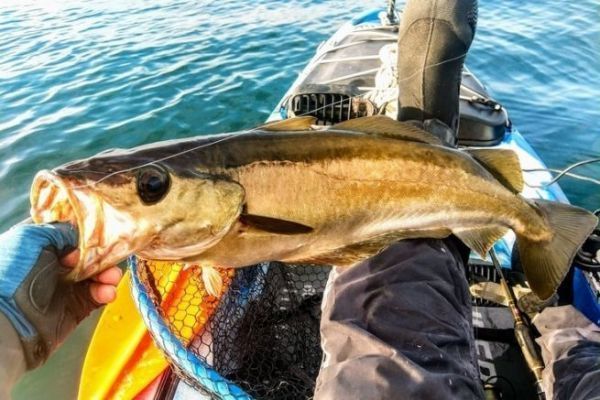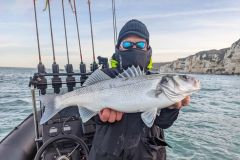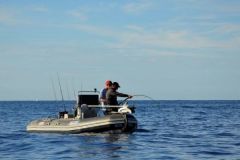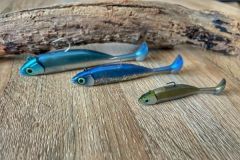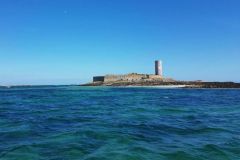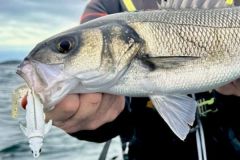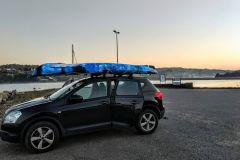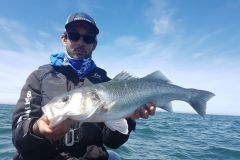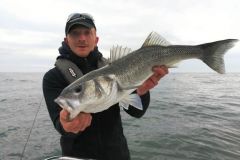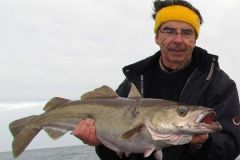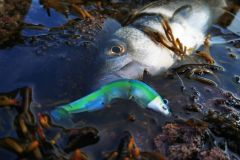Acceptable conditions
Between sun and mist, finally an outing on the north coast after a period of scarcity. The weather over the last few months hasn't left us much choice. The kayaks have stayed in the garage. So when a window of opportunity opens up, you can't miss it. An opportunity to renew acquaintance with our friends the lees. Although the tidal coefficients were at their lowest, at 34, we had to take advantage of this opportunity. The forecast was for a bright morning, with a risk of thunderstorms from 2.00 pm. Being out on the water at daybreak, this left plenty of time to check out what was going on in the open sea.
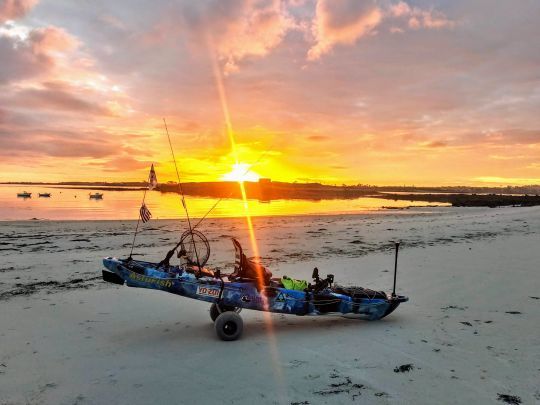
It will also be an opportunity to manage this new regulation on the water, which allows only two fish to be caught. For me, the regulatory mesh size is ridiculous and I consider the biological mesh size to be the minimum for this species.
An interesting session
At the start of the session, I'm treated to a superb sunrise with the Vierge lighthouse off Plouguerneau in the background. No time to lose, I head straight for my usual bases, an hour's sail away, while processing the few echoes recorded by the sounder. These are the first small dolphins, caught in fifteen meters of water, and they have no trouble leaving. A short hour on my spots looking for more interesting fish. I find my first customer on a 25-metre drop-off in the access channel, in an area where the incoming tidal current is undoubtedly more pronounced, despite the low coefficient. He caught my Talashad on the way down, almost at the bottom, which is why it's so important to maintain contact with the line, even when it's sinking to the bottom. A good fight ensued, ending with the landing of a nice 73 cm fish... This fish will be ikéjimé later on.
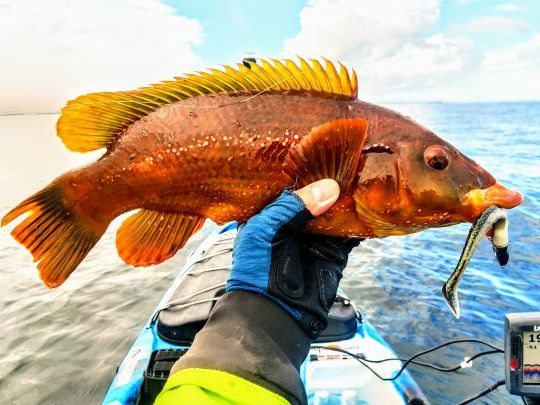
This year I'm equipped with a Flashmer 60 medium kit for this purpose, and the fish taken will be treated in the same way. It's quite easy to do, even in a kayak, as I show in the video at the end of this article. After this first fish, I follow up with a nice old one, then another spot over 60 cm that I'll also sample. My first 2024 mesh bass will follow closely, then another pretty old one. These fish will always be hooked with a Talashad. I've stopped looking for lees, having caught my two authorized fish, so I'll have to do my utmost to stop reeling them in if I come across a day when they're feeding...
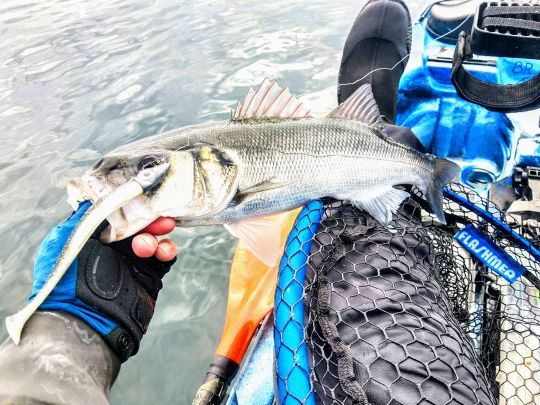
I slowly make my way back to the beach, all the while looking for sea bass with swimming fish. I hook a nice 55 cm on a 3.50 m bottom with a juvenile 3 DB Jerkbait Yo Zuri. This was followed by several smaller bass, which went on to grow. I return with 2 decent pollack and 2 sea bass taken, which is enough for consumption. All these fish will be "ikejimed".

It's midday and the first signs of the forecast thunderstorms are visible. We head for the little beach for the end-of-session picnic.
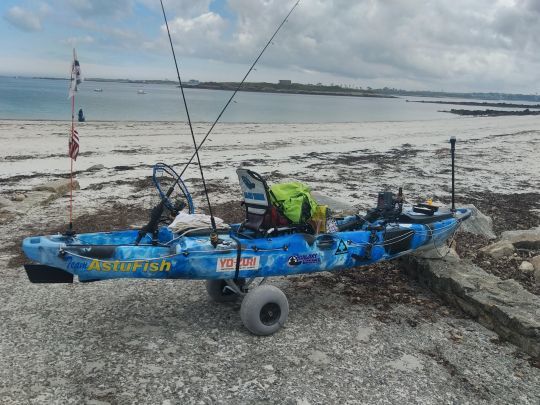
This outing gave me a good idea of how to deal with these new local regulations, which, to say the least, do not meet with unanimous approval, at least among hobbyists, who see them as a confiscation of a species. The next few days are still rather chaotic in terms of forecasts. We'll have to keep an eye on the slots and seize them when they present themselves, until the next one.
